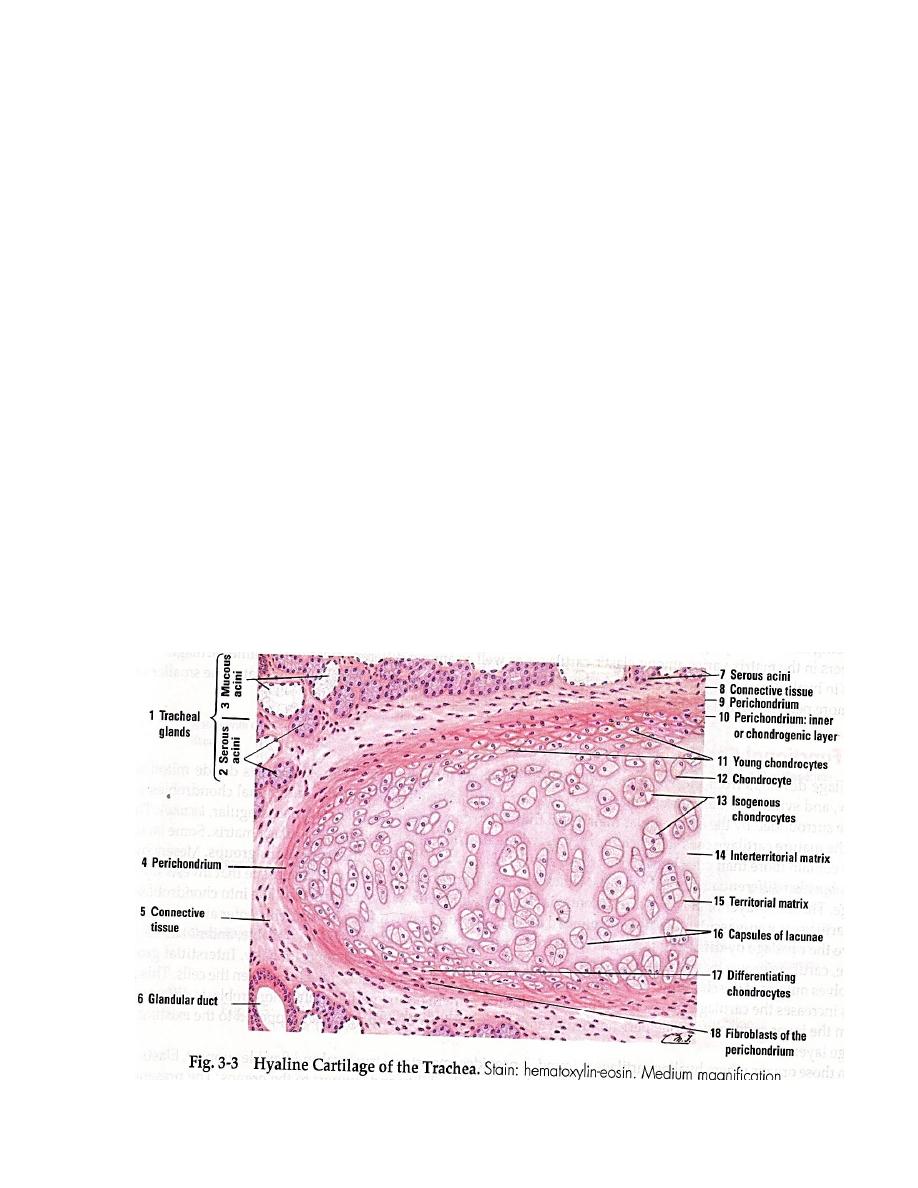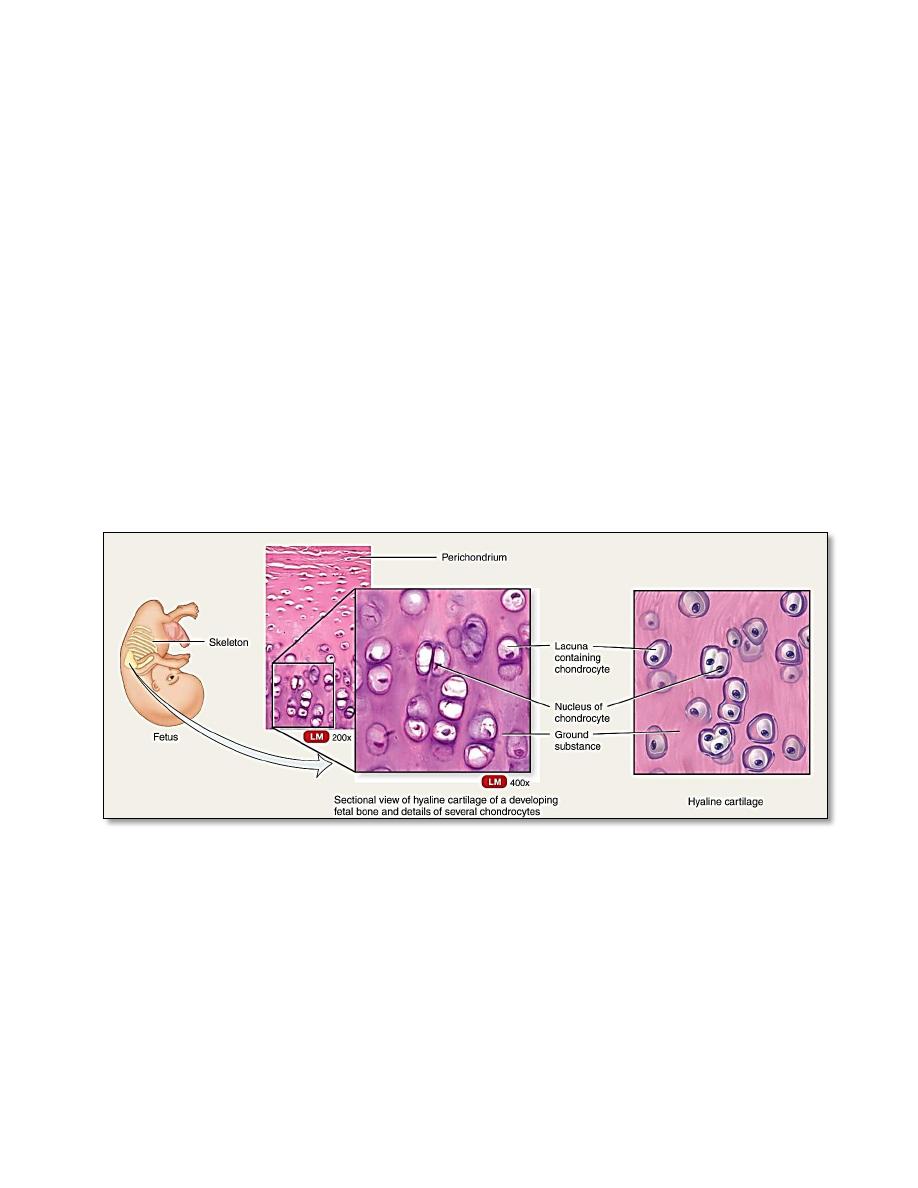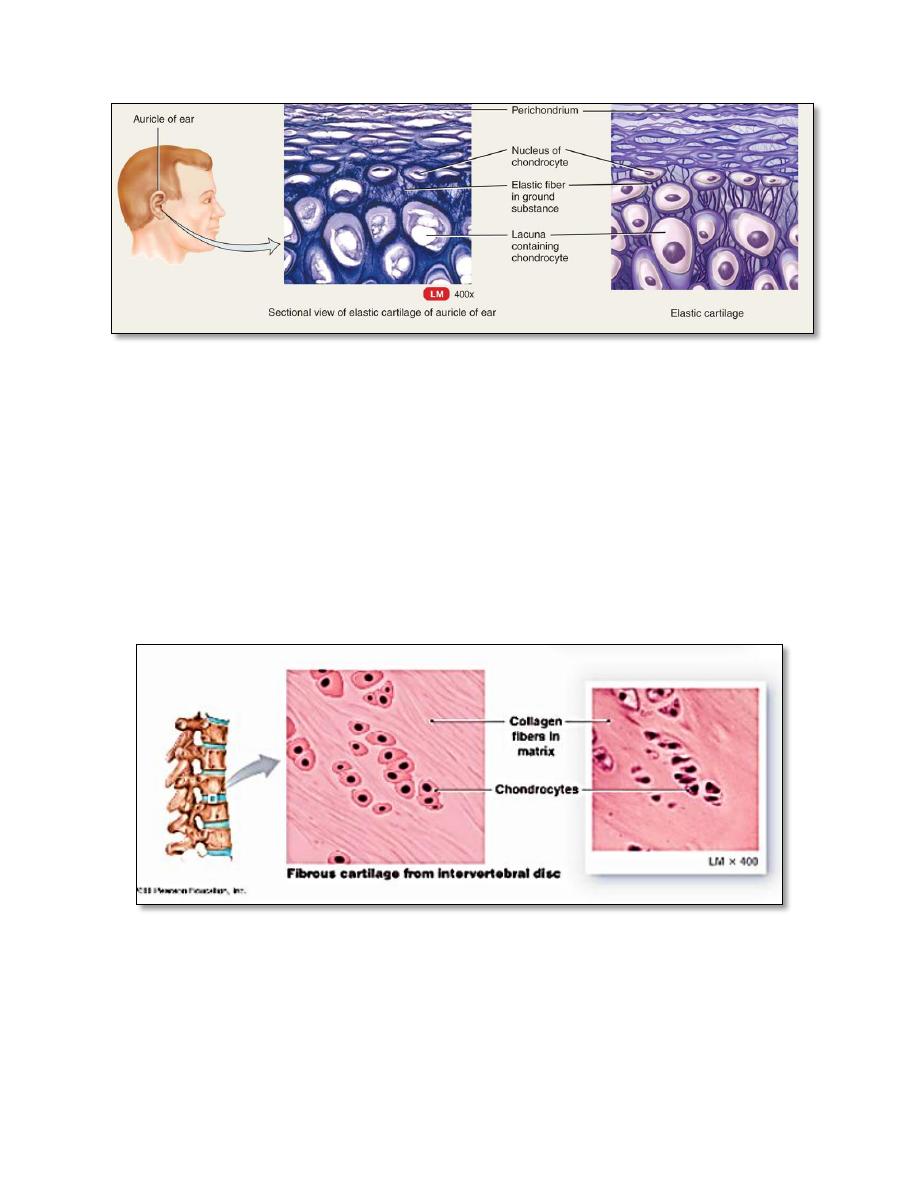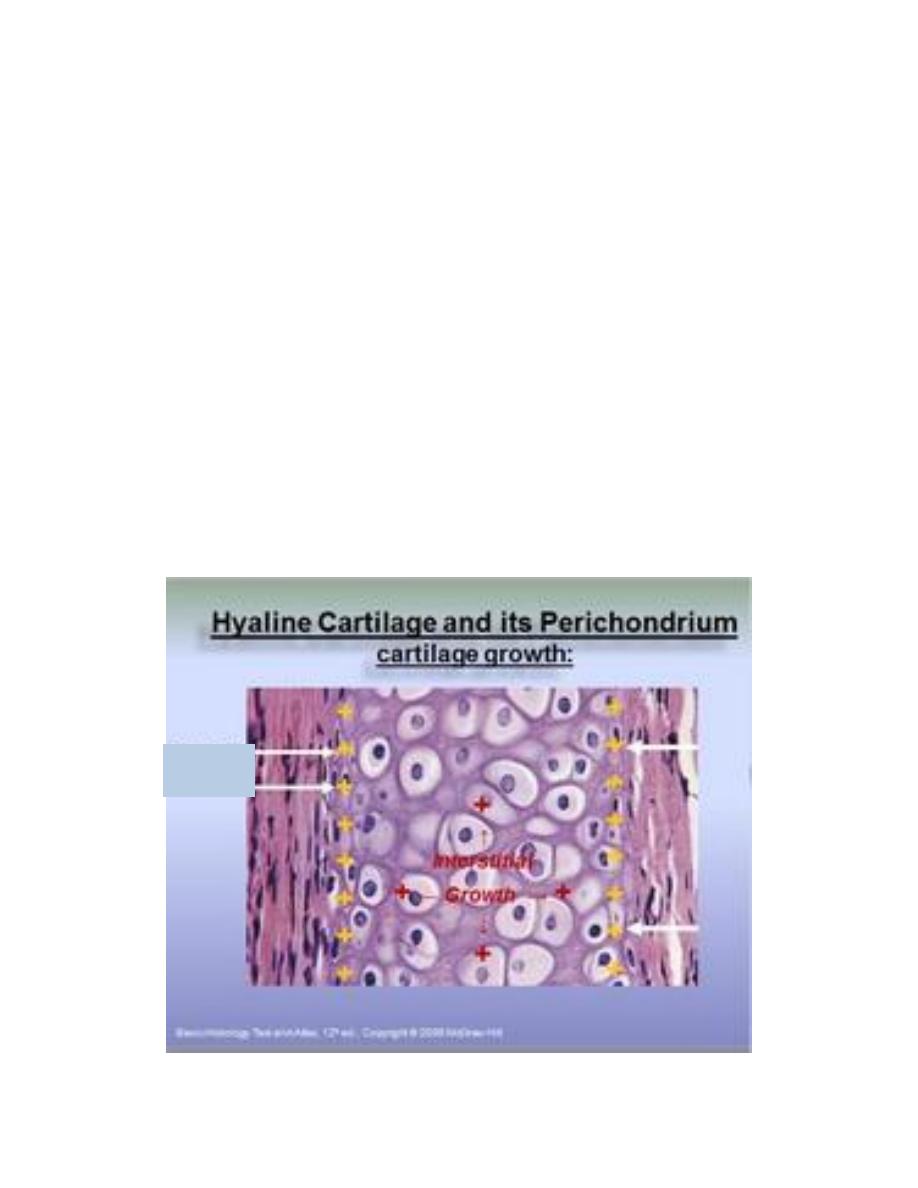
1
Lec. 7
Biology
Histology
The cartilage
Cartilage is a flexible connective tissue, including the joints between
bones, the rib cage, the ear, the nose, the bronchial tubes and the
intervertebral discs. It is not as hard and rigid as bone, but it is stiffer
and less flexible than muscle.
Characteristics of Cartilage:
Cartilage is a specialized type of connective tissue. consists, like other
connective tissues, of cells and extracellular components.
A membrane of dense irregular connective tissue called the
perichondrium covers the surface of most cartilage.
Unlike other connective tissue, cartilage has no blood vessels or
nerves, except in the perichondrium therefore cartilage cells received
their nutrition by diffusion from the vessels in the perichondrium.
Since cartilage has no blood supply (avascular tissue), it heals poorly
following an injury.
Cartilage is rather rare in the adult humans, but it is very important
during development .In developing humans, most of the bones of the
skeleton are preceded by a temporary cartilage "model". Cartilage is
also formed very early during the repair of bone fractures.
Cartilage matrix
It consists of a dense network of collagen fibers and elastic fibers
firmly embedded in chondroitin sulfate, a gel like component of the
ground substance. Cartilage is nourished by diffusion of gases and
nutrients through this gel.
Cartilage cells
1. Chondrogenic cells : Are spindle -shaped, narrow cells that derived
from mesenchymal cells. These cells can differentiate into
chondroblasts.

2
2. Chondroblasts : immature cartilage-producing cells. They are derived
from two sources; Mesenchymal cells and Chondrogenic cells.
3. Chondrocytes: mature cartilage cells , they occur singly or in groups
within space called lacunae in the extracellular matrix.
Perichondrium
The perichondrium is a sheath of dense connective tissue that surrounds
cartilage in most places, forming an interface between the cartilage and the
tissue supported by the cartilage .Perichondrium contains (B.V, nerves and
lymphatic vessels).
It is composed of 2 layers , the outer one which is fibrous
containing collagen fibers and inner layer which is cellular containing flat
cells called chondrogenic cells ,this layer called chondrogenic layer, the
inner portion of this layer is rich with chondroblast which differentiated into
chondrocytes.
Function of the perichondrium
1-Essential for growth and development of bone.
2-Nutrition .
3-Supports soft tissues.

3
TYPES OF CARTILAGE
1- Hyaline Cartilage
Hyaline cartilage (hyalos=glass):-
This type of cartilage is bluesh/wihte in the fresh state and is the most
prevalent form contains a resilient homogenous ground substance. Many
collagen fibers are embedding in the matrix, and prominent chondrocytes
found in the spaces called lacunae. Toward the center of a mass of hyaline
cartilage, the cells are large and are usually present in groups of two, four or
more called cell-nests (isogenous group). Division of a single parent cell
forms these groups. Toward the periphery of the cartilage, the cells are
smaller. Most hyaline cartilage is surrounding by perichondrium.
Hyaline
cartilage functions in providing support, and precursor to bone.
The
locations of Hyaline cartilage include
rings in the trachea, nose, articular
ends of bones, and fetal skeleton .
2-Elastic cartilage
Fresh elastic cartilage has yellowish color because of the presence of
elastin. It is identical to hyaline cartilage but in addition to collagen type II it
contains an abundant network of fine elastic fibers. It also possesses
perichondrium. Elastic cartilage possesses greater flexibility than hyaline
cartilage and maintains the shape of certain structures. The locations of
elastic cartilage include the external ear and the, epiglottis .

4
3-Fibro cartilage
It is a form of connective tissue transitional between dense connective
tissue and hyaline cartilage. Chondrocytes may lie singly, but most often
they form short rows between dense bundles of collagen fibers.
Fibrocartilage lacks a perichondrium, combines strength and rigidity, and is
the strongest of the three types of cartilage. It is typically found in relation to
joints and is the main component of the intervertebral disks.

5
Growth of Cartilage
Growth occurs by two mechanisms:
1. Interstitial growth (endogenous growth)
It occurs only in young cartilage (mainly in immature cartilage) in
which the Chondrocytes lies in the central part of the cartilage divide
and increase in number and secrete intercellular substance and causing
increase of width from inside to outside.
2. Appositional growth (exogenous growth)
Iit occurs also in mature cartilage , the chondroblasts within the inner
layer of perichonderium multiply and some of them form intercellular
substance and become chondrocytes where the other remain as
chondroblasts , this way causing increase of width from outside to inside.
Appositional
growth
